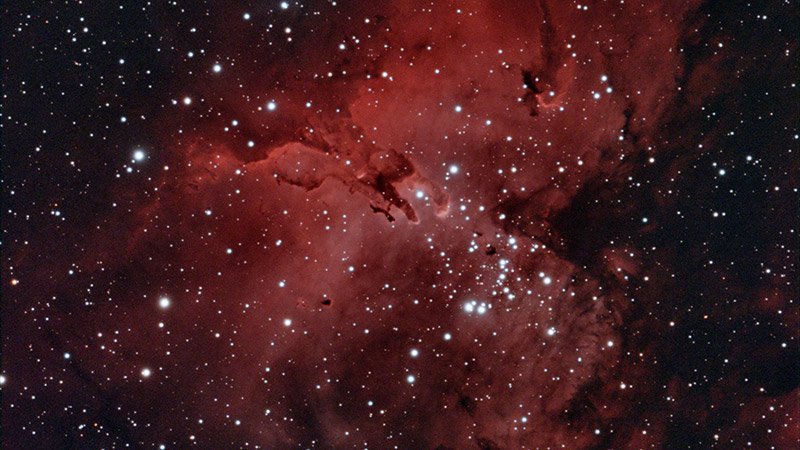Published:

Astrochemists recreated deep space in their Edinburgh laboratory and discovered that icy space dust is more complex than previously thought.
Over the past 12 years, Professor Martin McCoustra and a team of scientists from Heriot-Watt University have been investigating how ice forms and behaves around tiny specks of dust in the interstellar environment, the space between star systems.
These icy grains, responsible for the spectacular structures like the Eagle Nebula, help in the formation of new stars and planets and provide a source of complex organic molecules from which life can originate.
The onion model visualises the icy coat of the grains as a series of layers, where the core dust grain is first fully covered by a thick layer of water-rich ice.
Professor Martin McCoustra, leader of Heriot-Watt's astrochemistry research group, said: “These tiny little snowballs have key roles to play in the evolution of the current universe, from controlling the process of star formation to providing an inventory of organic molecules from which biology might evolve. If we understand their formation and evolution then we can more fully appreciate those roles.”
The team is challenging the widely-held belief that icy space dust is structured like an onion, formed from discrete icy layers with a water-ice layer next to the dust grain itself, and outside that a layer rich in carbon monoxide and organic molecules.
In a new report published in ACS Space and Earth Chemistry, the Heriot-Watt astrochemists show that the dust is actually much more structurally complex: more like a badly-baked cherry cake than a neat onion.
McCoustra said: “The onion model visualises the icy coat of the grains as a series of layers, where the core dust grain is first fully covered by a thick layer of water-rich ice.”
“On top of that layer, other species are adsorbed depending on temperature. This means only a relatively pure layer of water interacts directly with the dust grain surface while other species, such as carbon monoxide, will interact with the water surface.”
“We discovered that water is more mobile on the dust grain surface and tends to form little islands of ice as opposed to a uniform film.
“This leaves parts of the grain surface free on which other species can adsorb.
“So instead of an onion, picture a badly-baked cherry cake, where the cherries of water have sunk to the bottom of the icy cake as it is baked.”
McCoustra and his team used a space dust proxy for their experiments: a copper plate coated in tiny silica particles, cooled to a few degrees above absolute zero and in an ultrahigh vacuum. They investigated adsorption on, diffusion across and desorption from the cold surface of water and other species commonly found in the interstellar medium.
The next step, McCoustra says, is for observers and modellers to test out their ideas and for other scientists to help develop our understanding of how the icy grains grow in space.
“We are refining our model of how space dust grows and have, through a combination of observation and computer simulation, developed a yet-to-be-proven hypothesis.
“This work has stimulated an international collaboration to study the development of ices in space that has been awarded observing time on the James Webb Space Telescope during the first months of its operation.”
“Aspects of this complex process still need more detailed exploration, particularly the role of cosmic rays and ultraviolet light in driving non-thermal processes on and in the icy grain mantles.”
The research was funded through the UK Science and Technologies Facilities Council (STFC), the Engineering and Physical Sciences Research Centre (EPSRC), Heriot-Watt University and the European Community Marie Curie programme.
Read the paper in full here.